Economics for production of mushroom in Tonnes per annum (TPA)
Select production range for economics
3000 TPA 500 TPA 200 TPA 25 TPAEconomics of Button Mushroom Cultivation under Environment Controlled Conditions
White button mushroom (Agaricus bisporus) cultivation is a highly scientific activity. If done in a proper manner it gives very high returns to the entrepreneurs whether he is cultivating this seasonally or round the year. In India, its cultivation was first started in the hills as it requires low temperature for its growth but slowly growers realized the potential of this commodity and started cultivating this mushroom in the plains in winter season. Mushroom cultivation is a labour-intensive job and in the recent past many large farms had to abandon their operations in Europe and America due to very high labour cost. Complete mechanization of a farm where labour requirement will be less is a very high capital investment proposition making this activity uneconomical and uncompetitive. In India labour availability coupled with plentiful supply of agrowastes and requisite temperature make this activity attractive and economical. Many big units have come up in India cultivating white button mushroom. Most of their produce is exported to America and European countries.
Mushroom cultivation involves investment depending upon the size of the unit/ production targets. Before starting this venture one should have thorough knowledge in this field and should survey the market for sale of the produce. Expenditure on a mushroom farm can be divided into fixed assets and recurring expenditure.
A. Fixed Assets
The items permanent in nature and last longer than duration of one crop are covered in this category. These include land, building, boiler, blowers, compost handling equipments, computers, air-conditioning equipments, shelves, etc.
B. Variable Cost/Recurring Expenditure
This component includes the expenditure involved in the production of crop. These include raw materials like compost ingredients, spawn, casing soil, energy cost, pesticides, labour charges,salary of the employees, etc. Mushroom cultivation is a labour-intensive job if done on a large scale. Experienced labour is employed for composting, spawning, casing and spraying of the beds. Their wages, therefore, would be higher. Ordinary labour can be employed for picking Cultivation of A.bisporus can be done seasonally under natural conditions when the temperature is suitable for its cultivation. It can also be cultivated throughout the year using cooling facilities, which control the environment suitable for the growth of A.bisporus.
In the present chapter, economics of mushroom cultivation throughout the year would be discussed taking a 100% EOU (around 3000 TPA), medium units (500 and 200 TPA) and a small unit (25 TPA) into consideration. All the projects are based on the assumption that compost is prepared by indoor method taking 6 crops / year/ room of 60 days duration, considering air bed ratio of 1:5 and mushroom yield of 18 kg/100 kg compost.
3000 TPAC. Economics of Plant Having 3000 TPA Production
1. Infrastructure required
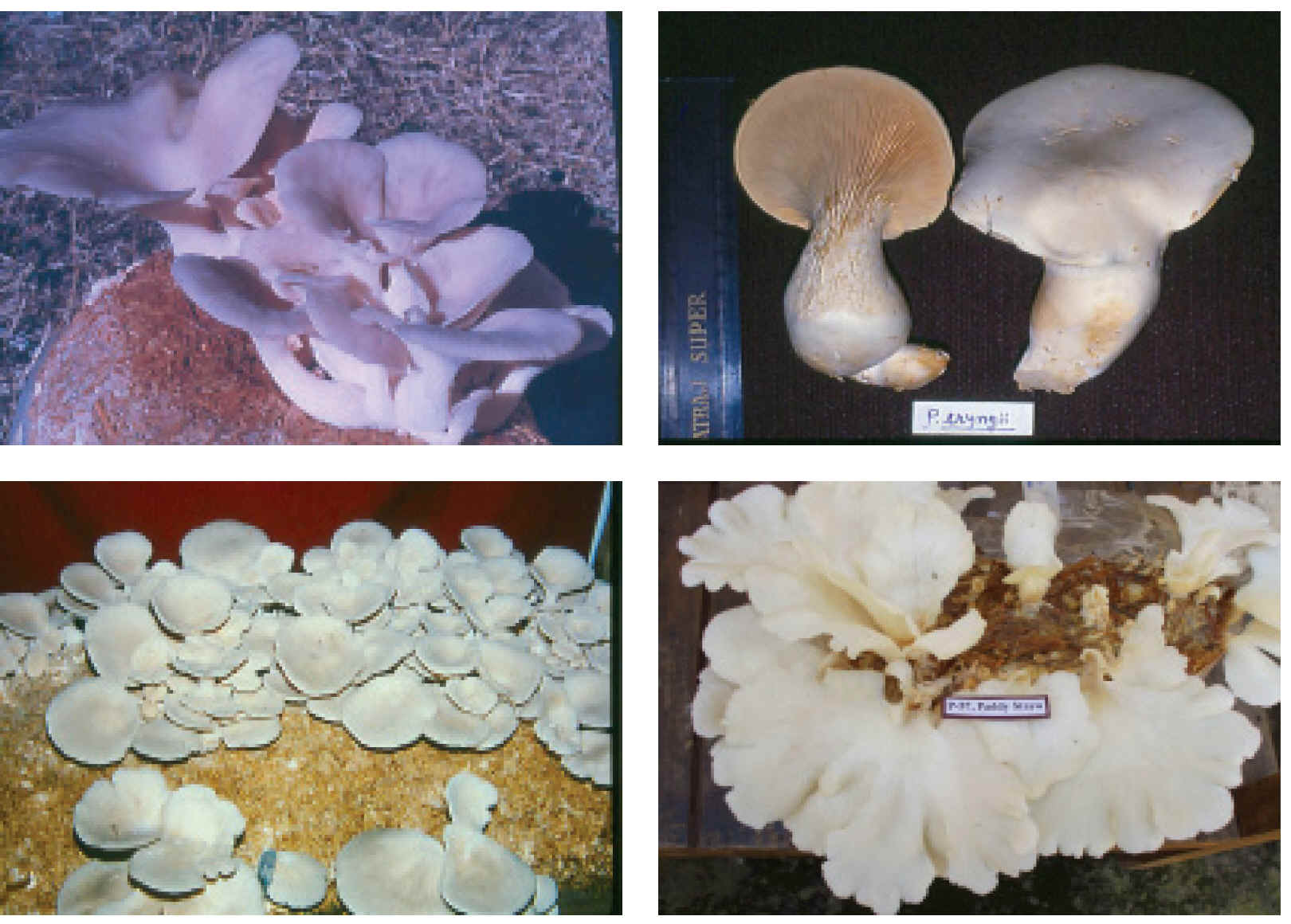
In addition to above, land would be required for casing soil dump, road, paths etc. Total approximate land required for the project around 5 hectares
2. Investment involved in the construction of infrastructure
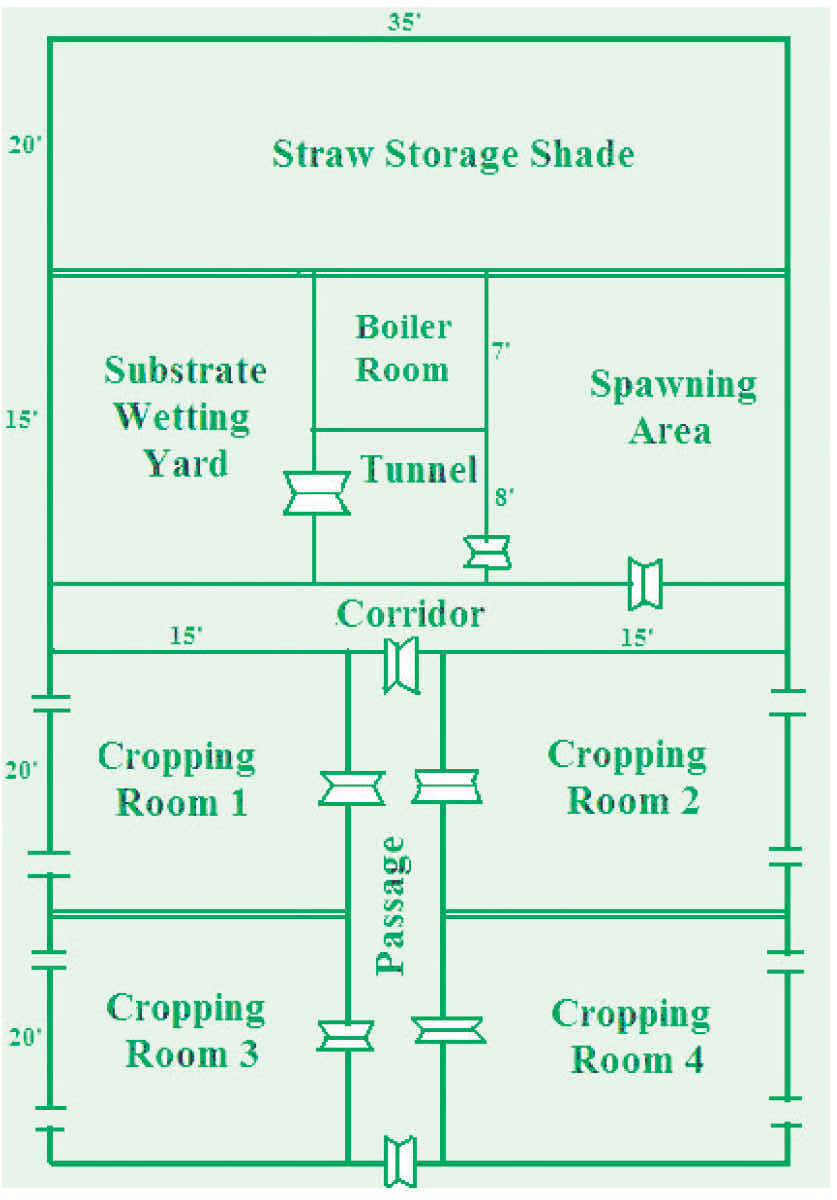
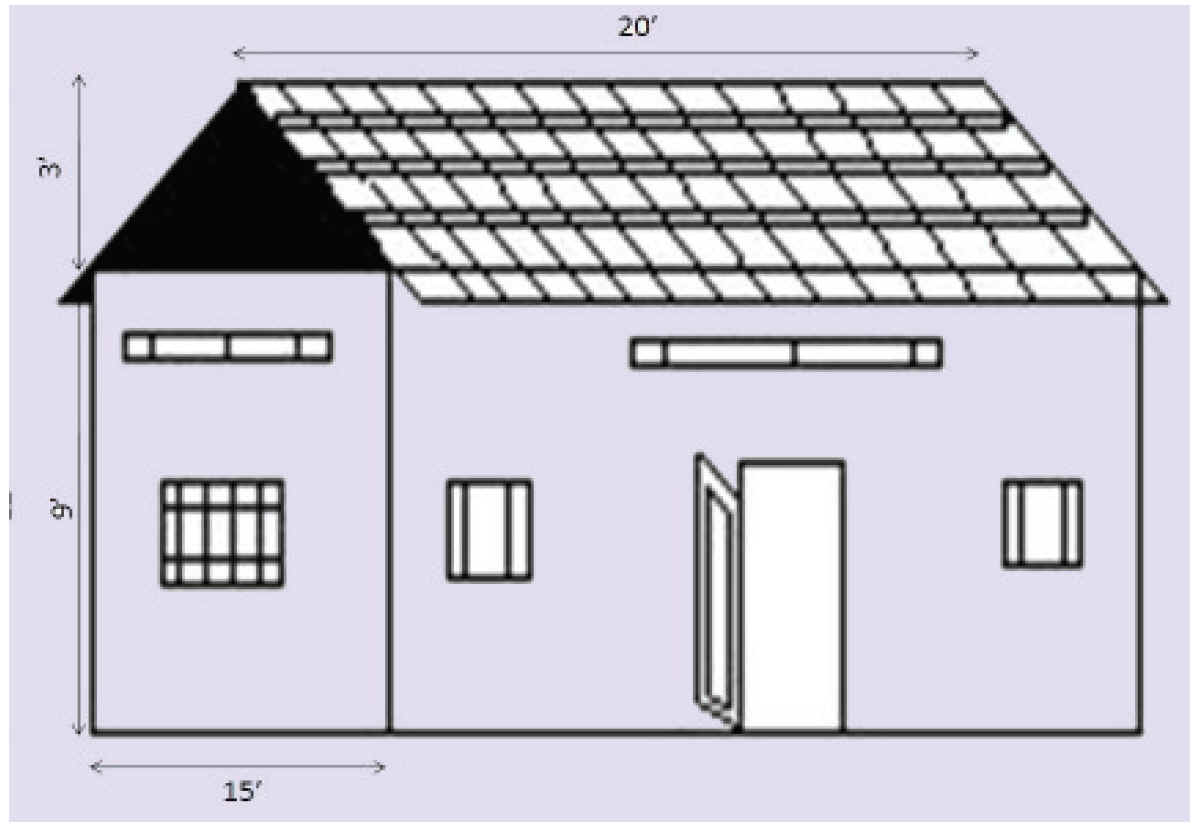
3. Investment on machinery
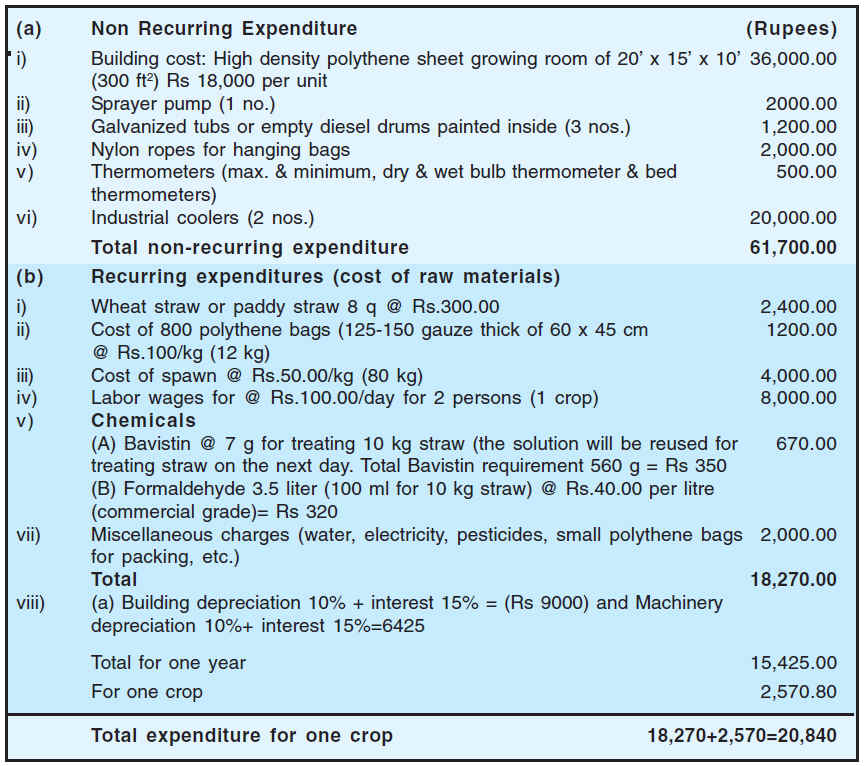

4. Manpower requirement and wages involved / annum
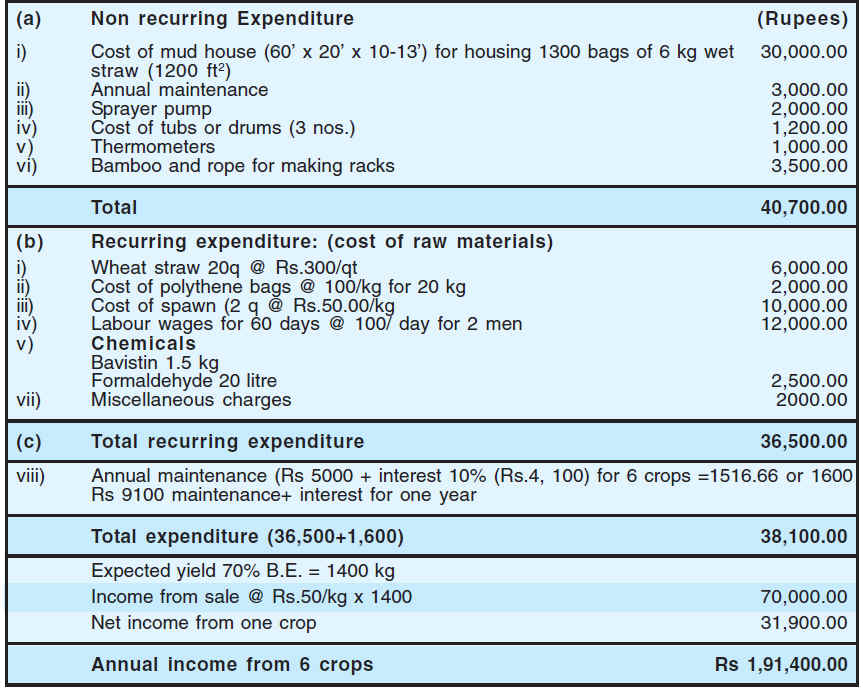
5. Expenses on raw materials
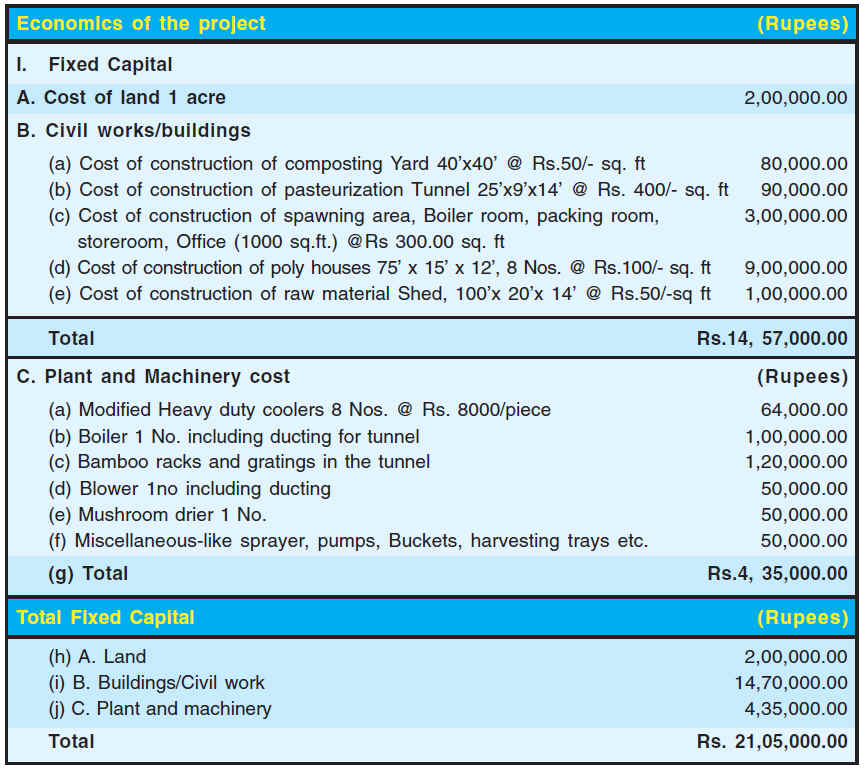
6. Interest and depreciation
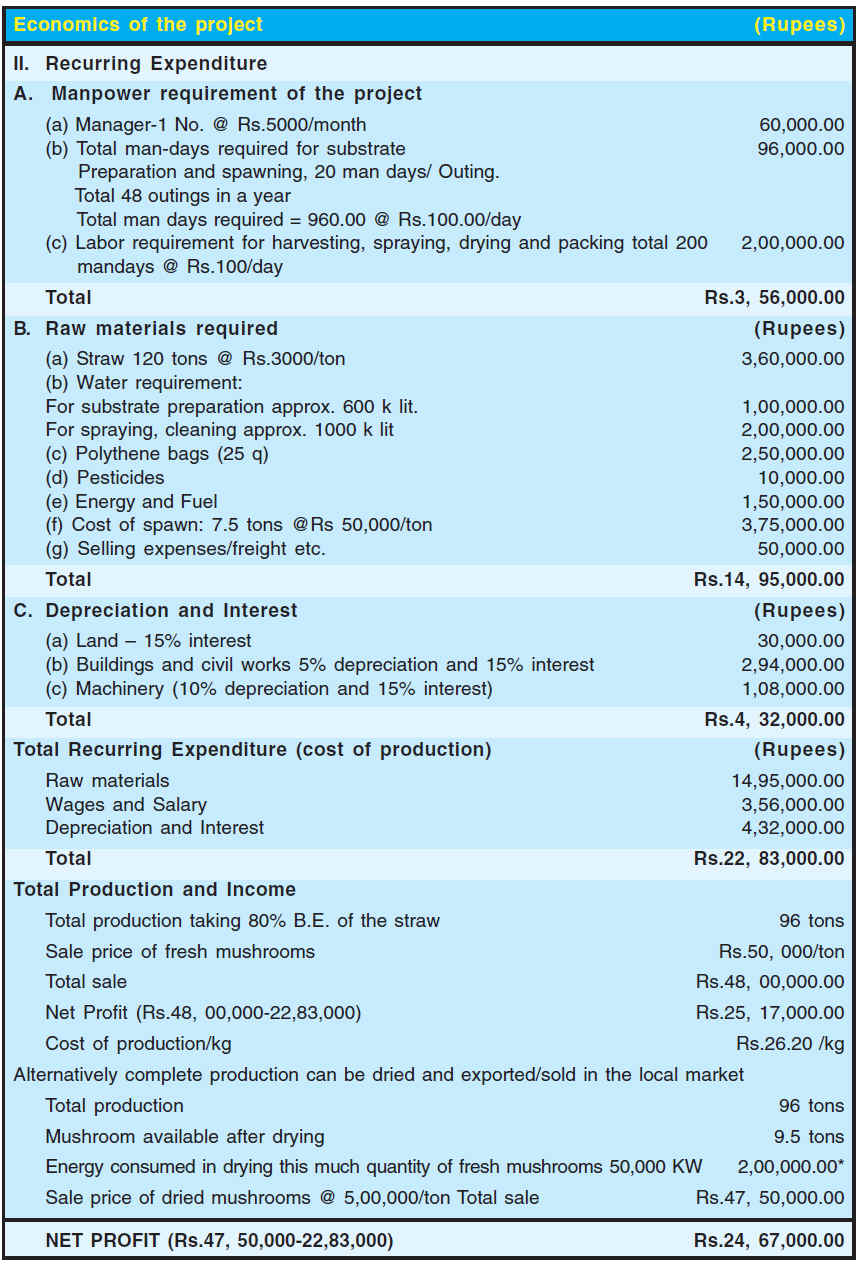
7. Cost of production

8. Total production at 100% capacity utilization

9. Canning operation (presuming 3300 tons available for canning)
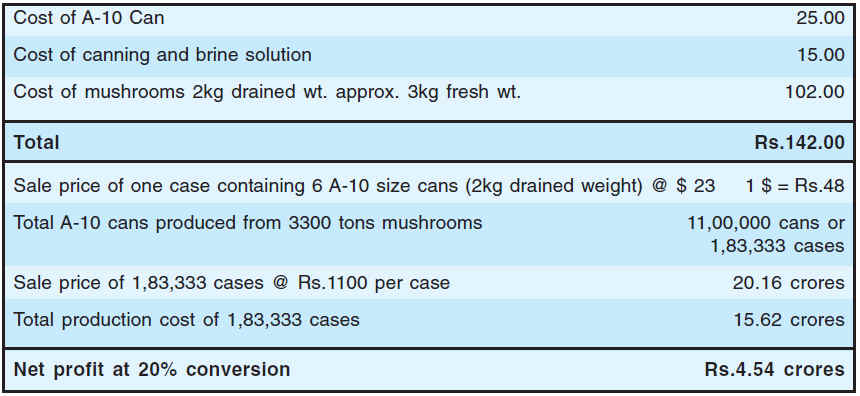
D. Economics of a Plant Having 500 TPA of White Button Mushroom Production
1. Infrastructure required
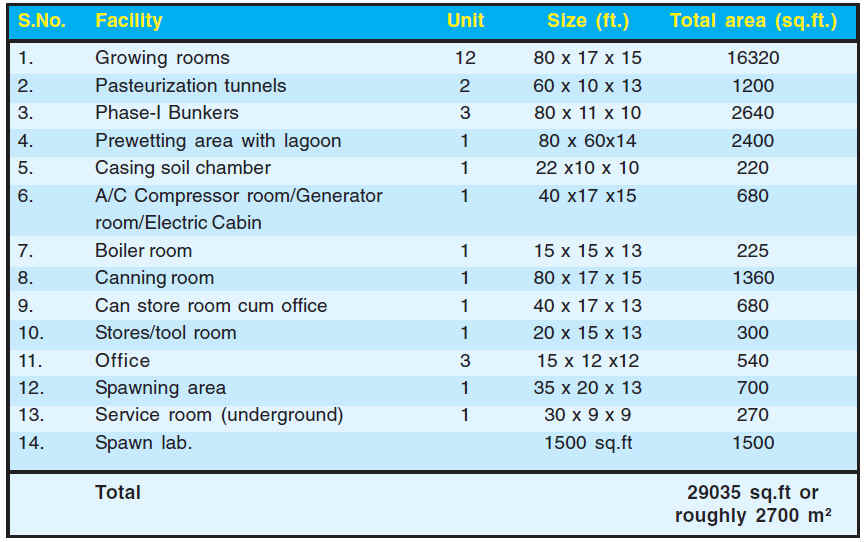
In addition to above land would be required for casing soil dump, straw storage, poultry manure storage, etc. Total approx. land required for the project 4 acres.
2. Economics of the project
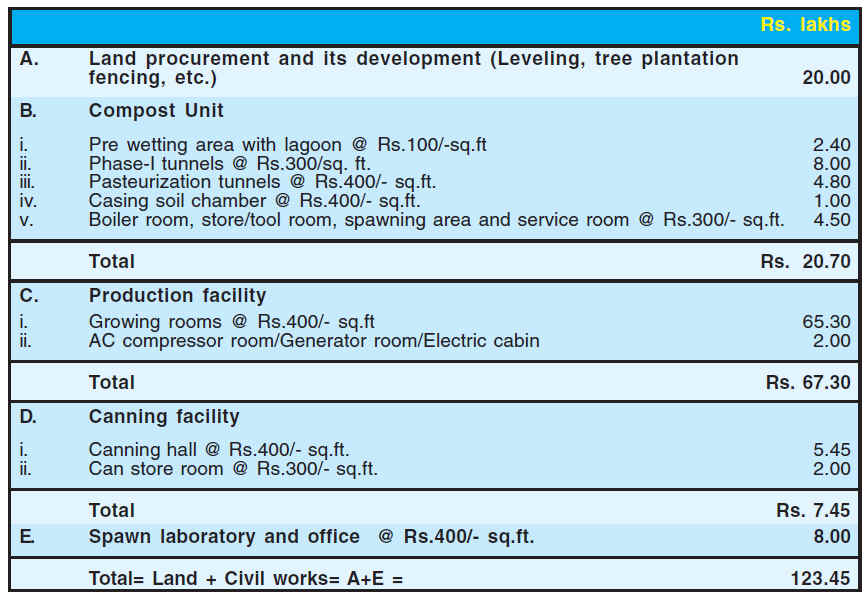
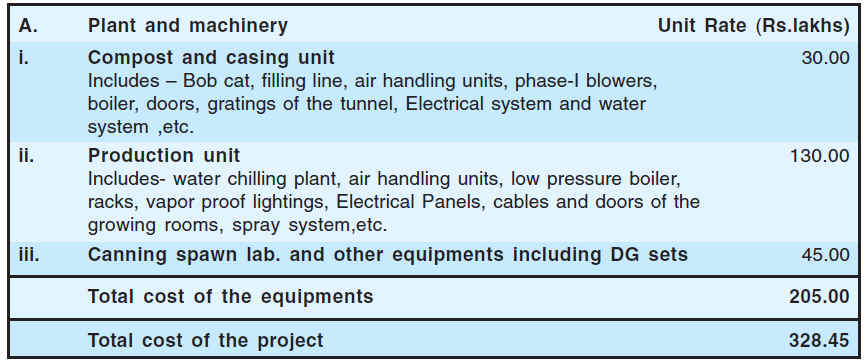
3. Recurring expenditure

4. Interest and depreciation
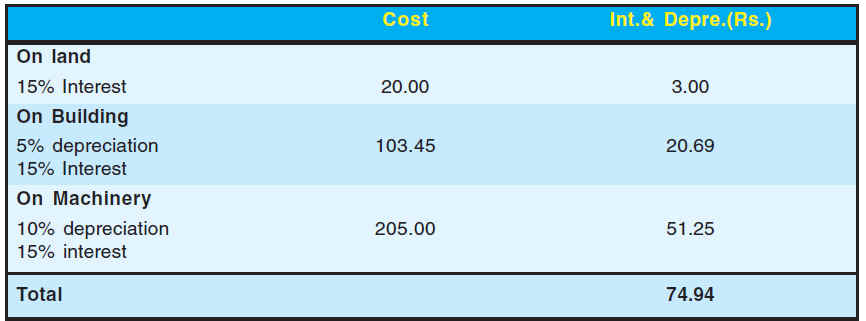
5. Cost of production

6. Total production at 100% capacity utilization

Since the project is big, half of the production is proposed to be sold as fresh while half can be processed and canned.
7. Sale and profit projections
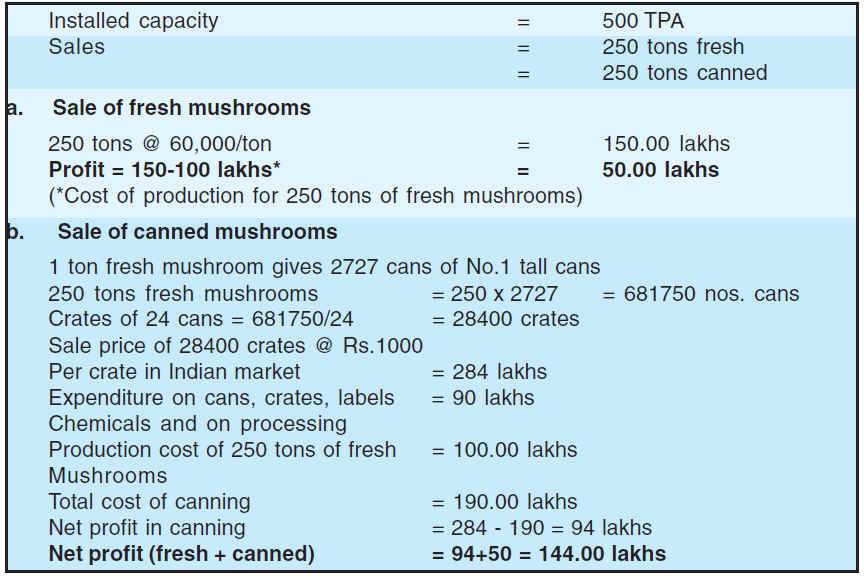
E. Economics of a Plant Having 200 TPA Mushroom Production
1. Total Infrastructure required
The approximate land required for the project around 2 acres.
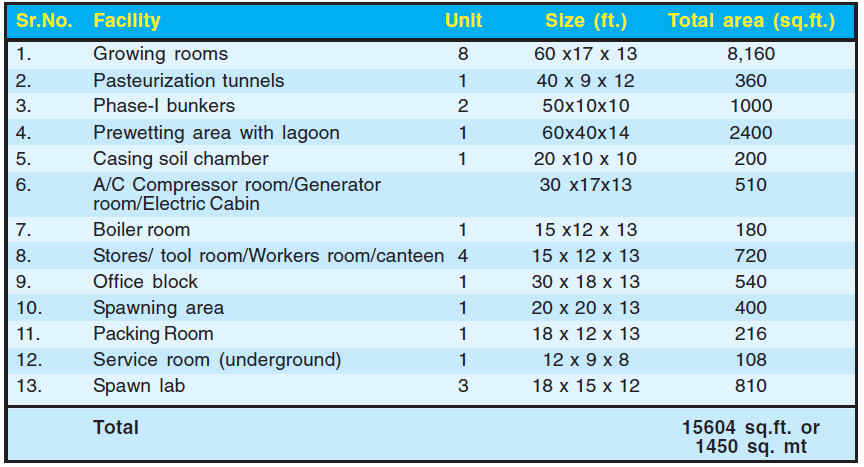
2. Economics of the project
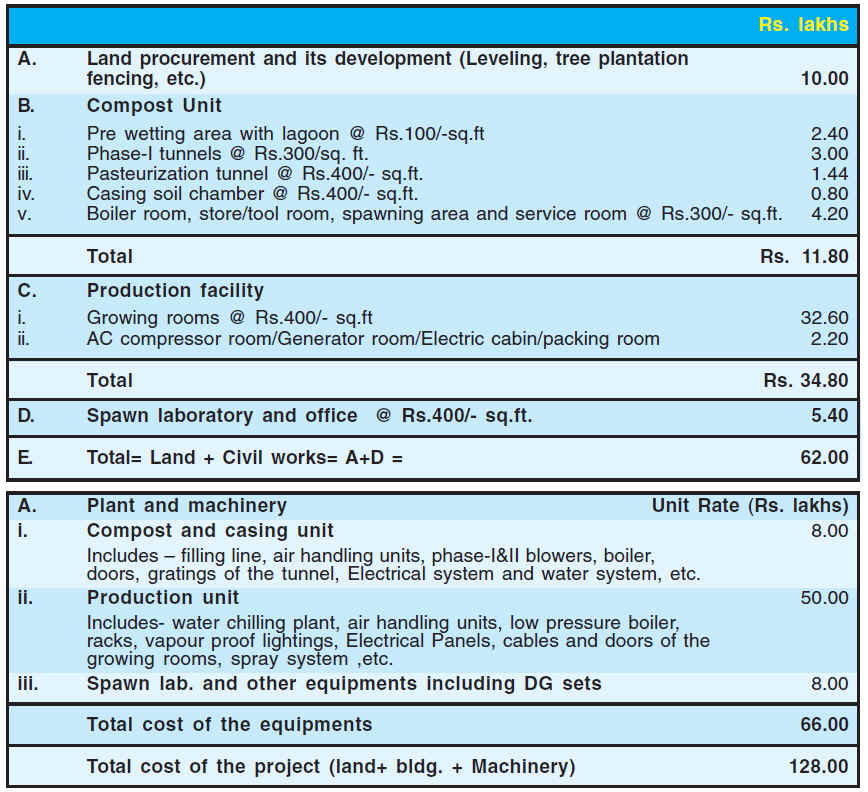
3. Recurring expenditure

4. Interest and depreciation
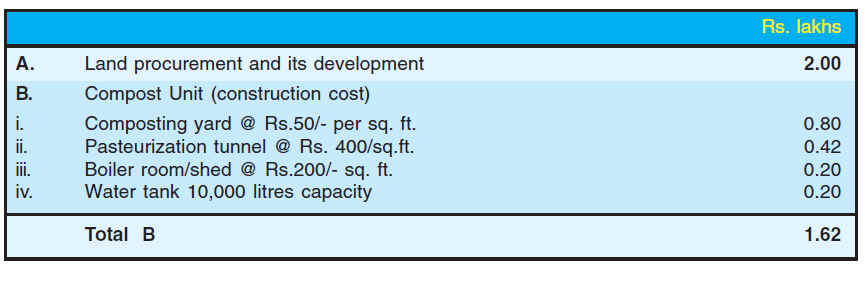
5. Cost of production

6. Total production at 100% capacity utilization

7. Sale and profit projections

F. Economics of a Plant Having 25 TPA of Mushroom Production
1. Total Infrastructure required

2. Economics of the project

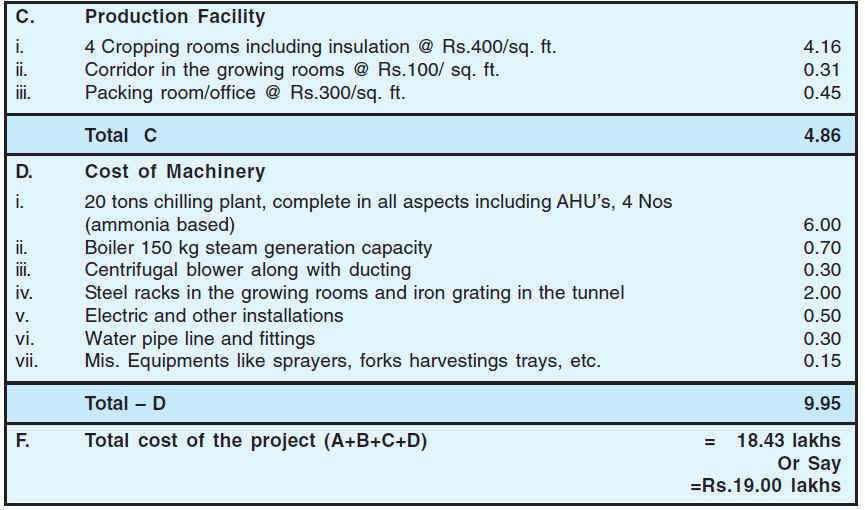
3. Recurring expenditure
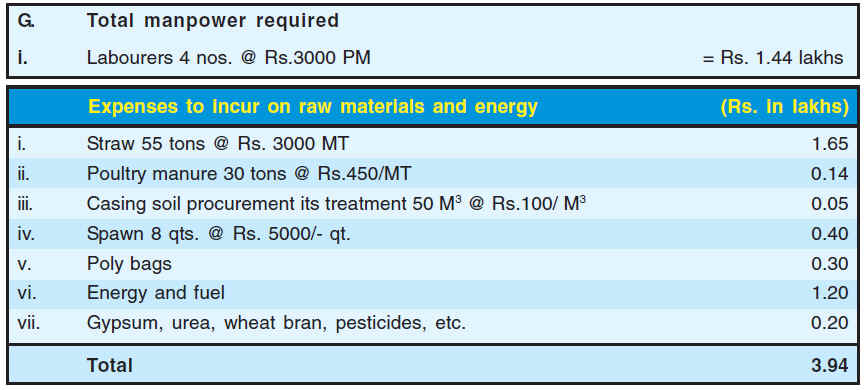
4. Interest and depreciation
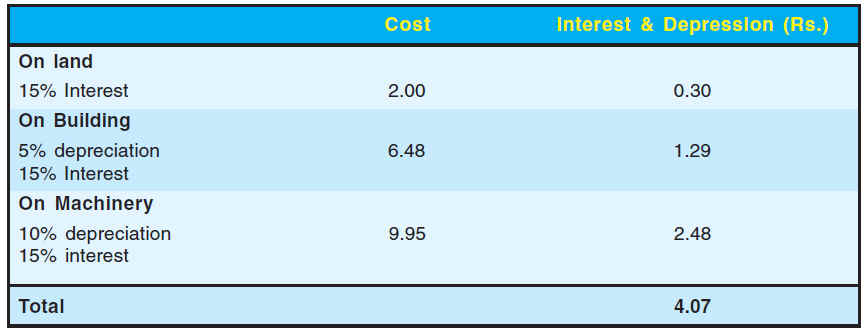
5. Cost of production

Total production at 100% capacity utilization at 18% conversion taking 6 crops per room (6 tons compost) of 60 days duration =
26 tons (accepted 25 tons) or around 68- 70 kg mushrooms production per day.
6. Cost profit analysis

G. Sum Up

Calculation is based on prices in 2010
The approximate land required for the project around 2 acres.
F. Economics of a Plant Having 25 TPA of Mushroom Production